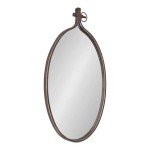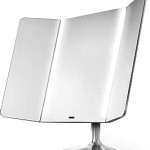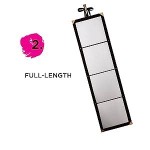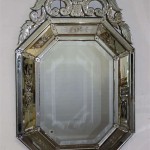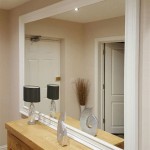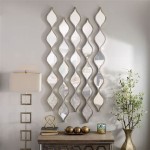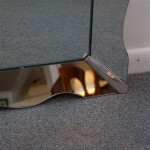Vintage Mirrors with Lights: A Fusion of Classic Charm and Modern Functionality
Vintage mirrors with lights offer a compelling blend of old-world aesthetics and contemporary practicality. They serve as both functional pieces for daily grooming and decorative elements that enhance a room's ambiance. This article explores the various aspects of these unique items, from their historical context to their diverse styles and practical applications.
The concept of illuminated mirrors can be traced back to the early days of electric lighting. Theatrical vanity mirrors, often lined with incandescent bulbs, were among the first examples. These provided performers with the necessary illumination for applying makeup and preparing for the stage. This functionality gradually transitioned into homes, with lighted mirrors becoming a luxurious addition to bathrooms and dressing rooms.
Over time, these mirrors evolved alongside interior design trends. The Art Deco period, in particular, saw a surge in popularity for glamorous vanity mirrors featuring geometric shapes and intricate detailing. These pieces often incorporated frosted or etched glass and utilized newly available lighting technologies. Later, mid-century modern designs embraced simpler, cleaner lines with integrated lighting fixtures.
Genuine vintage mirrors with lights can be categorized into several distinct styles. Hollywood Regency mirrors, for instance, are characterized by their opulent frames, often adorned with ornate carvings, gold leaf, or mirrored tiles. These mirrors frequently feature large, round or oval shapes and rows of globe-shaped bulbs reminiscent of classic Hollywood dressing rooms. Art Deco mirrors, as mentioned previously, offer a more geometric aesthetic with streamlined shapes and etched glass detailing.
Mid-century modern mirrors, on the other hand, typically feature simpler, rectangular or square shapes with integrated lighting fixtures that blend seamlessly into the frame. These mirrors often utilize materials like chrome, brass, or wood and emphasize clean lines and functional design. Industrial-style vintage mirrors might feature metal frames and exposed bulbs, creating a more utilitarian aesthetic.
The lighting incorporated into vintage mirrors also varies. Early examples often utilized incandescent bulbs, offering a warm, yellowish light. While these bulbs contribute to the vintage charm, they can be less energy-efficient than modern alternatives. Many individuals choose to replace these with LED bulbs, which provide a brighter, cooler light and consume significantly less energy. LEDs also offer greater longevity, reducing the need for frequent replacements.
When selecting a vintage mirror with lights, several factors warrant consideration. The size and shape of the mirror should be proportionate to the space it will occupy. A large, ornate mirror might overwhelm a small bathroom, while a smaller, simpler mirror might get lost in a spacious dressing room. The style of the mirror should complement the overall décor of the room. A Hollywood Regency mirror, for example, might clash with a minimalist interior, while a mid-century modern mirror might look out of place in a traditionally styled room.
The condition of the mirror is another crucial factor. Genuine vintage pieces might exhibit signs of wear and tear, such as scratches, chips, or tarnished metal. While some patina can add to the character of the piece, significant damage might detract from its aesthetic appeal and functionality. The wiring should also be carefully inspected to ensure it is safe and up to code, especially when dealing with older electrical components.
Beyond their aesthetic appeal, vintage mirrors with lights offer practical benefits. The integrated lighting provides targeted illumination for tasks such as applying makeup, shaving, or styling hair. This focused light can be particularly helpful in bathrooms or dressing rooms with limited overhead lighting. Furthermore, these mirrors can serve as a focal point in a room, adding a touch of glamour and sophistication.
The placement of a vintage mirror with lights can significantly impact its functionality and aesthetic contribution. In a bathroom, the mirror should be positioned above the vanity at a height that allows for comfortable use. In a dressing room, the mirror might be placed on a wall or integrated into a vanity table. Proper placement ensures optimal lighting and enhances the overall functionality of the piece.
Maintaining a vintage mirror with lights requires careful attention. The frame should be cleaned regularly with a soft cloth and appropriate cleaning solution, depending on the material. The bulbs should be replaced as needed, and the wiring should be inspected periodically by a qualified electrician to ensure safety. With proper care, a vintage mirror with lights can serve as a beautiful and functional piece for generations to come.
The versatility of vintage mirrors with lights allows them to be incorporated into a wide range of interior design styles. From glamorous Hollywood Regency to minimalist mid-century modern, these mirrors offer a unique blend of form and function that can enhance any space.

Vintage Mirror With Lamp And Brass Details Retro Studio

Vintage Oval Mirror With Lighting And Plexiglass Edge By Hillebrand 1960s

Vintage Bathrooms Mirror With Lights Farmhouse Decoration

Vintage Round Design Mirror With Light Allibert 70s

30bulbmirror Jpg 400 457 Pixels Mirror With Light Bulbs Bulb Lights

Vintage Special Danish Teak Mirror With Light Retro Studio

Vintage Vanity Mirror With Light Tabletop Or Wall Hanging Art Deco Period

Unusual Vintage Mirror With Two Sconces Brass Framed Wall

Gold Mathieu Mategot Style Fifties Vintage Mirror With Light Bdf

Ironck Vanity Desk Set With Large Led Lighted Mirror Power 7 Drawers Dressing Makeup Table For Bedroom Industrial Style Vintage Brown Com

